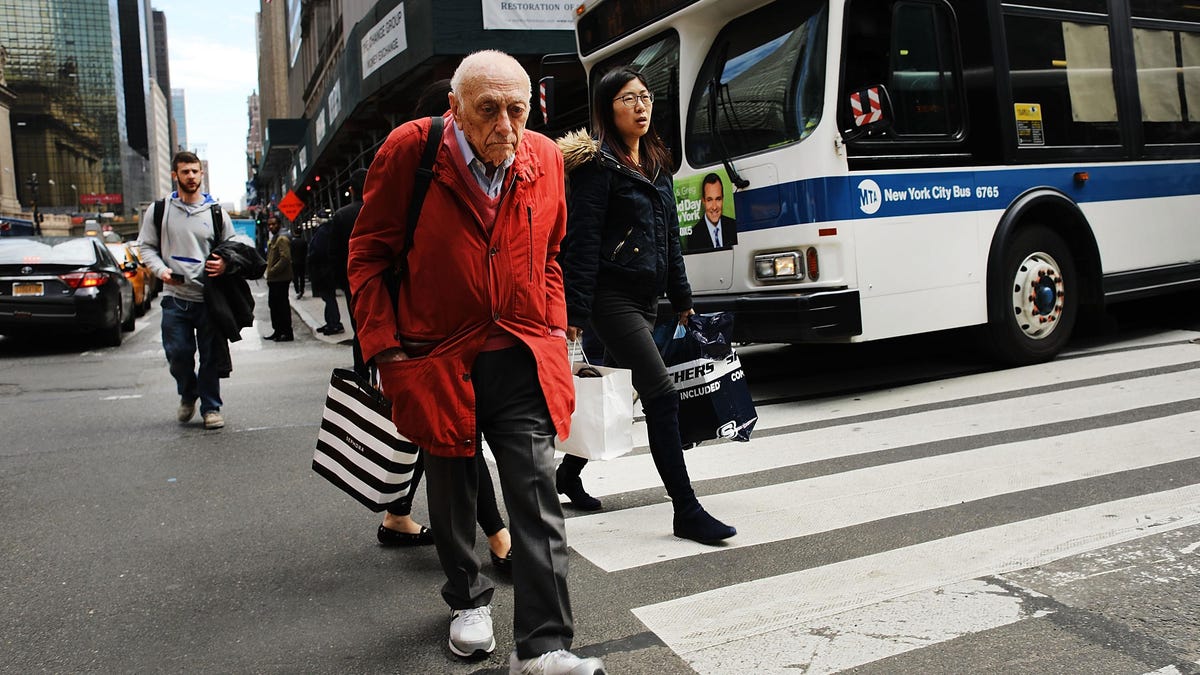- cross-posted to:
- fuck_cars@lemmy.ml
- cross-posted to:
- fuck_cars@lemmy.ml
I met up with some friends in Athens, Georgia, to watch the UGA game last year. I don’t care for Auburn, so seeing them lose 42-to-10 was enjoyable, especially since I was spending time with longtime friends, as well as two Auburn fans who really thought they had a chance that year. Once the game was over, it was time to leave. As I headed back to my car, I had to cross the street, and when the walk sign came on, I did exactly that. And it nearly ended with me in the hospital.
While I was already in the crosswalk, the driver of a Lincoln Navigator decided that was the perfect time to turn right, coming terrifyingly close to hitting me. And, of course, he decided it was my fault because, I, a pedestrian, was in his way. How dare I cross the street? Streets are for cars. Thankfully, he didn’t run me over, but sadly, as anyone who’s ever walked anywhere can tell you, it’s the kind of thing that happens all the time. I can’t even count how many times drivers turning right on red have almost hit me, many of whom didn’t bother to stop at the intersection before barrelling on through.
According to a recent Fast Company article, experiences like mine are far too common, as are experiences where things go even worse for the pedestrian or cyclist. It’s not just because impatient drivers blow through the intersection without regard for any pedestrians who may be legally crossing the street. It’s also because it’s hard even for responsible drivers to monitor traffic coming from their left for an opening while also checking for pedestrians on their right. As the author of the Fast Company article, David Zipper, puts it, “Cognitive overload is inevitable.”
Considering that pedestrian and cyclist deaths are at a 40-year high, Zipper argues it’s time to simply ban right turns at red lights. And frankly, I agree with him. If not altogether, at least ban it in areas where there’s a reasonable chance that a pedestrian may use the crosswalk. Sure, it’s an inconvenience for drivers, but it’s hard to care since ending up in the hospital or dead is much more inconvenient for pedestrians and cyclists who get hit.
It’s also not like being able to turn right on red has been the law of the land since cars first hit the streets. As Zipper points out, it was almost unheard of in the U.S. until the oil crisis hit. Believing that right-on-red would reduce gas consumption, the federal government strong-armed states into making it the law by default. States that didn’t comply would be cut off from federal energy funding, and by 1980, the last state finally gave in.
But while Zipper argues it isn’t clear how much gas was saved by legalizing right-on-red, we do know that it almost immediately made our roadways less safe. He points to a 1982 study that found a significant increase in the number of pedestrians and cyclists who were hit by drivers. In Ohio, for example, that figure jumped 57 percent for pedestrians and 80 percent for cyclists. Wisconsin was even worse, with pedestrian impacts up 102 percent and cyclist impacts up 72 percent. Improving air quality is important, but especially considering how much cleaner modern engines are, is the little gas saved moving through an intersection faster really worth the danger that right-on-red poses to everyone who’s not in a car?
Thankfully, more and more cities are coming around to the danger that right-on-red poses to others. From Cambridge, Massachusetts to Washington, D.C., Ann Arbor, Michigan, and Seattle, turning right at a red light has now been banned, following a precedent set by New York City years ago.
Proponents of right-on-red will argue that it doesn’t just waste gas, but that it also increases traffic congestion. However, in a recent study, the Institute of Transportation Engineers found that banning right-on-red makes intersections safer, the policy change only created “minor impacts to traffic operations.” And personally, I’m OK with traffic moving a little slower if it means drivers send fewer people to the hospital. Plenty of others will disagree, but it’s past time to make right-on-red the exception, not the rule.
There’s also more in the original article than I have time to include here, so head over to Fast Company to read the whole thing.
link: https://jalopnik.com/its-past-time-to-ban-right-on-red-1850903405
link to Fast Company article: https://www.fastcompany.com/90908929/its-time-for-a-nationwide-ban-of-right-on-red
First right on red is perfectly fine. Second we need to require better and more drivers education before handing out a license. Third there are basically no accidents of pedestrians and cars in my area that result from a right on red. The problem we have is when people are doing illegal lane changes while turning. But again better and more drivers education will fix a lot of that.
deleted by creator
The city where I live added restrictions on right-on-red when there’s a bike path and it does feel safer.
I went to visit the US recently. I started into the crosswalk on the green walk sign and this cunt just kept driving only looking left. She only stopped when she noticed a scooter partway through the crosswalk, not even seeing my wife and I. Ban that shit.
lol its past time to have more difficult drivers test.
whats next? ban roundabouts?
Fuck you, Collin Woodard.







